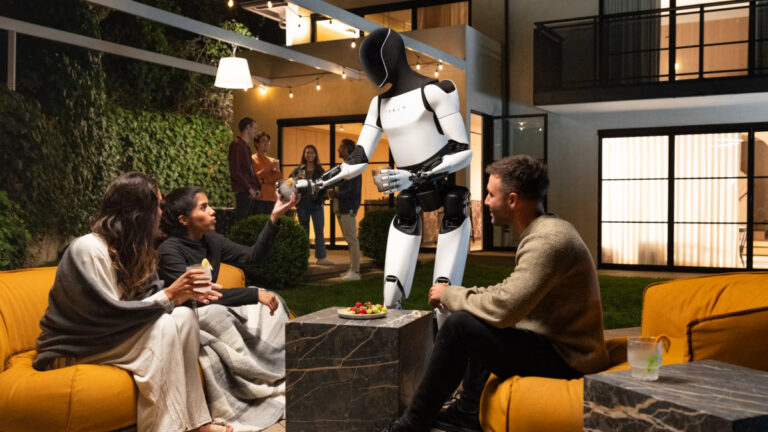
Two years ago, Tesla’s Optimus prototype was an underwhelming mess of exposed wires that could only operate in a carefully controlled stage presentation. Last night, Tesla’s “We, Robot” event featured much more advanced Optimus prototypes that could walk around without tethers and interact directly with partygoers.
It was an impressive demonstration of the advancement of a technology Tesla’s Elon Musk said he thinks “will be the biggest product ever of any kind” (way to set reasonable expectations, there). But the live demos have also set off a firestorm of discussion over just how autonomous these Optimus robots currently are.
A robot in every garage
Before the human/robot party could get started, Musk introduced the humanoid Optimus robots as a logical extension of some of the technology that Tesla uses in its cars, from batteries and motors to software. It’s just a robot with arms and legs instead of a robot with wheels,” Musk said breezily, easily underselling the huge differences between human-like movements and a car‘s much more limited input options.
After confirming that the company “started off with someone in a robot suit”—a reference to a somewhat laughable 2021 Tesla presentation—Musk said that “rapid progress” has been made in the Optimus program in recent years. Extrapolating that progress to the “long term” future, Musk said, would lead to a point where you could purchase “your own personal R2-D2, C-3PO” for $20,000 to $30,000 (though he did allow that it could “take us a minute to get to the long term”).
And what will you get for that $30,000 when the “long term” finally comes to pass? Musk grandiosely promised that Optimus will be able to do “anything you want,” including babysitting kids, walking dogs, getting groceries, serving drinks, or “just be[ing] your friend.” Given those promised capabilities, it’s perhaps no wonder that Musk confidently predicted that “every one of the 8 billion people of Earth” will want at least one Optimus, leading to an “age of abundance” where the labor costs for most services “declines dramatically.”

